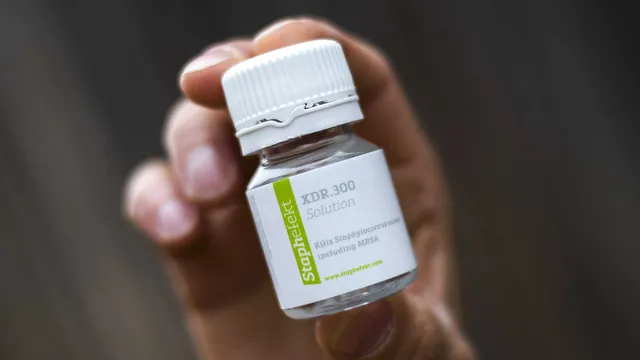The discovery offers hope for new drugs that will help fight bacteria that are resistant to modern antibiotics.
Researchers at the University of Pennsylvania have used artificial intelligence to search for antibiotics in microbes that have existed on Earth for billions of years. These microorganisms are called archaea and have been found to contain substances that could potentially save human lives, according to Interesting Engineering. The laboratory, led by Cesar de la Fuente, had previously searched for new antibiotics in fungi, bacteria, and animals, as well as in the DNA of extinct organisms and chemicals in animal venom. But microbes, especially archaea, are different from bacteria, plants, animals, and fungi.
"Although they look like bacteria under a microscope, archaea have different biochemistry, cell membranes, and shared genetics," the authors write in their study, published in the journal Nature Microbiology. This allows archaea to exist in unexpected places, such as superheated underwater vents, turbulent hot springs, and other extreme environments. They can survive crushing pressure, toxic chemicals, and extreme temperatures.
To identify new compounds in archaea that could lead to next-generation antibiotics, the scientists used an artificial intelligence tool called APEX. It analyzed thousands of peptides (short chains of amino acids) with known antimicrobial properties. Artificial intelligence can predict the likelihood that a sequence of amino acids will have a similar effect. When they scanned 233 species of archaea, the tool found more than 12,000 potential candidates for antibiotics. The team named these molecules "archaeazines." Chemical analysis showed that archaeazines differ from known antimicrobial peptides (AMPs) — specifically, in the distribution of their electrical charges. In the next step, the researchers selected 90 archaeazines to test on natural bacteria.
How the mechanism works
Archeazines attack the internal defense mechanisms of bacteria by disrupting the electrical signals that keep the cell alive. This contrasts with other known AMPs, which attack the external defense mechanisms of bacteria.
In the initial step, 80 archaeins were tested against pathogenic and drug-resistant bacteria. Of these, 93% had antimicrobial activity against at least one bacterium, and three were selected for further testing on animal models.
Four days after the start of the experiment, all archaeazines stopped the growth of drug-resistant bacteria that people often get in hospitals, including staph. Most of the new compounds were effective, and one—archaein-73—successfully fought off infection in mice, performing no worse than the well-known antibiotic polymyxin B, which is called an "last resort" antibiotic and is used when other drugs do not help.
Earlier, it was reported that researchers at the University of Texas had found a way to fight antibiotic-resistant superbugs using a common spice: turmeric. It turns out that if you feed bacteria curcumin and then expose them to light, destructive reactions begin inside the microbes. As a result, even resistant pathogens die, opening up a new approach to fighting them. | BGNES

 Breaking news
Breaking news
 Europe
Europe
 Bulgaria
Bulgaria







